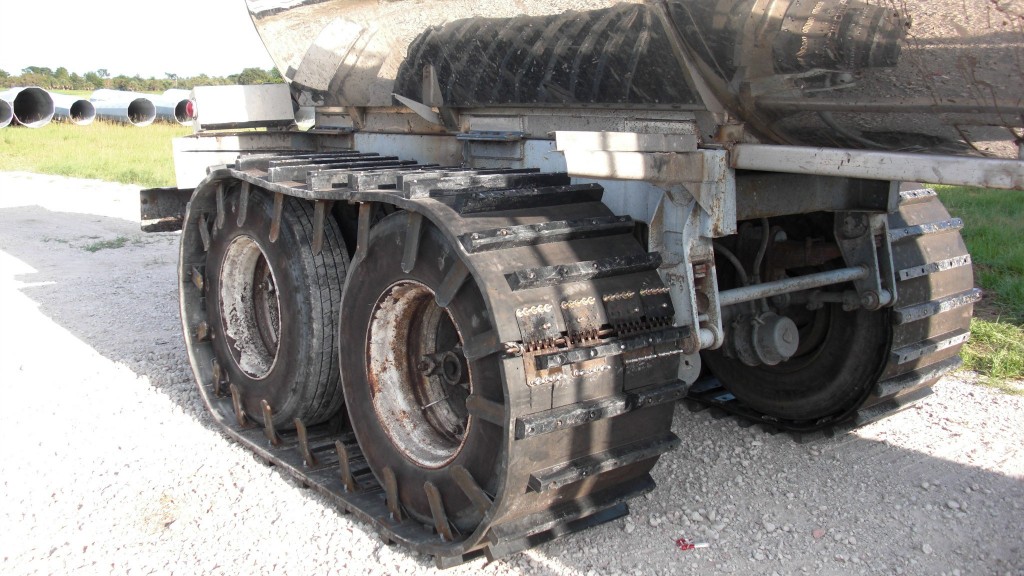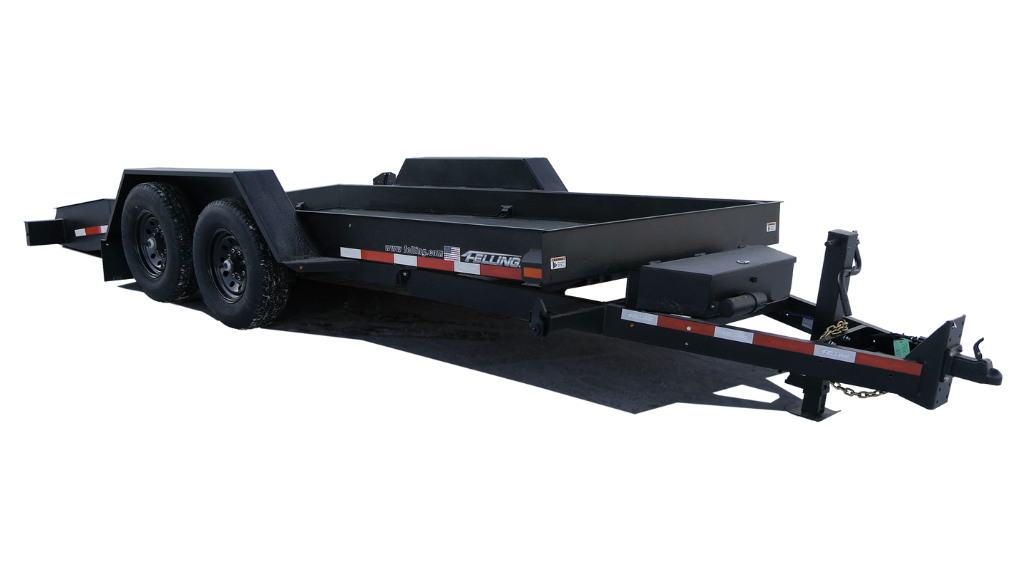Track conversions keep operations trucking in difficult conditions
Easy to install polyurethane tracks for trucks fit on all sizes

When construction sites move off the road and into challenging conditions, it's often the trucks that serve on those sites that are the most affected. Environmental requirements to reduce damage on wet, marshy sites, in snowy conditions or a number of other manners mean that trucks on tires are limited in where they can go.
If it's impractical to build haul roads or other ways to get those trucks from point to point, one option may be to look at track conversions. Developed initially for smaller vehicles, easy-to-install tracks for trucks are growing in popularity.
Edmonton, Alberta-based Right Track Systems developed its track systems for small vehicles such as ATVs, UTVs and skid steers, around 15 years ago, according to General Manager Tom Zaleski. It was the oil and gas industry that moved their designs toward truck tracks.
"A few years back, oil companies came to us and said that when they're servicing sites, or out on the patch, they run into really difficult ground conditions - mud, sand, snow and all that, which makes servicing rigs really difficult," Zaleski said.
Oil industry drives interest in tracks for trucks
Initial designs of rubber tracks for larger units were developed based on the smaller vehicle systems and scaled up to fit over the tires of large service rigs used in the oil patch, offering greater flotation for vehicles having to deal with those softer surfaces like mud and snow.
"The guys in Fort McMurray and elsewhere would use these to run up and down the cut lines, to service their wells, and in those kinds of situations. They found it provided a great reduction in ground pressure, a lower environmental footprint, and increased their traction," Zaleski described. "Instead of having to hire big Cat machines or helicopters to come out and drag their units out of the sand and snow, they could just outfit their own units with tracks and traverse that difficult terrain."
Once track conversions had begun making their way through the oil industry, other sectors started to look at the technology. Many businesses work in sloppy conditions and need to find ways to get more traction and move their trucks through mud and other wet ground, and the utility sector, construction companies and agriculture operations started showing interest.
Simple approach for rubber track selections
Zaleski said the approach taken by Right Track is a simple one: a rubber track is simply wrapped around the tires, tightened and put to use on the site. While there are some undercarriage systems that switch out the entire tire system with a sprocket-driven unit, those are quite cost-prohibitive in most cases. Rubber truck tracks are easier to use and maintain, he noted.
The design has gone through several iterations over the years to find the best capability possible for weight and speed, especially considering that the tracks will be likely to face a broad range of conditions.
"Guys don't necessarily want to put the tracks on and just stay in the soft stuff - they want to traverse the site and go several miles," Zaleski said. "They want to be able to do that quickly and efficiently while having a track to hold up to that speed and weight."
Broad range of vehicles can be converted
Truck tracks can be installed on a broad range of popular vehicle options in the construction sector. They are available for everything from smaller vehicles up through tandem and tri-axle vehicles all the way up to large mining trucks, Zaleski noted.
"The standard in the truck and trailer industry is generally tandem axle trucks running 11R22 or 24/25 dual tires on a tandem axle, running roughly a 15- to 20-ton load," he said.
Different uses require different types of track, which can handle a range of weight and ground conditions. Right Track's versions start with a standard track that can handle loads of up to 30 tons at travel speeds of 30 to 35 mph, Zaleski explained. The company's Off Road Construction (ORC) tracks are used on larger vehicles like articulated dump trucks or mining vehicles, and can handle the same speeds but carry up to 80 ton weights.
Different uses require different truck tracks
Track systems are customized for each buyer's equipment, Zaleski said, to ensure a precise fit. "We send out a sizing schematic that customers fill out with the dimensions of their current unit and so that they can check their clearances - you need extra space to run these tracks," he said. "We have ways of getting around it if they have a clearance issue. . .99 percent of the time tracks will go on without modifications."
Customization increases usage of truck tracks
Other features can also be customized, such as the style of cleats used.
"If guys are running up and down ice roads, we can install steel cleats to give them more traction that also helps reduce wear on the outside tread. This is good for people working in mining conditions, because they're in a lot of rock that can be quite abrasive to polyurethane tread," Zaleski. "In other cases, we can go to a lower profile polyurethane; customers order that when their biggest concern is environmental damage and they want to leave as little a trace of the truck going back and forth as possible."
Truck tracks can swap from vehicle to vehicle
When the truck tracks arrive at a customer's operation, they should fit on that specific vehicle perfectly and can also be used on similar vehicles, with extension or shortening kits available to help add versatility.
On a tandem truck, installation generally takes a half-hour to 45 minutes per side. The tracks are laid out flat, the truck driven onto the midpoint, and air let out of the tires. Customers use a winch or comealong to draw the tracks together at a hinge point, where they are connected with a pin. Tires are refilled, and the truck is able to get to work. Removing the tracks just takes pounding out the pin and rolling the tracks off.
Right Track units are built with replaceable cleats or grousers, depending on the needs of the customer. When the cleats are worn, customers can order new ones for around a third of the price of new tracks.
Conversions available for other equipment
Along with trucks and trailers, track conversions have become available for a range of other products. Aerial lifts and telehandlers are one more recent area that Right Track has added to its track conversions, though in those cases installation involves removing the tire and installing a foam-filled tire and rim structure with a track around it, Zaleski said. Popularity of truck track conversions has grown steadily, and today Right Track is selling into countries around the world, according to Zaleski. Most are still in the U.S. and Canada, but others have sold into Europe, Australia, Africa and China.


